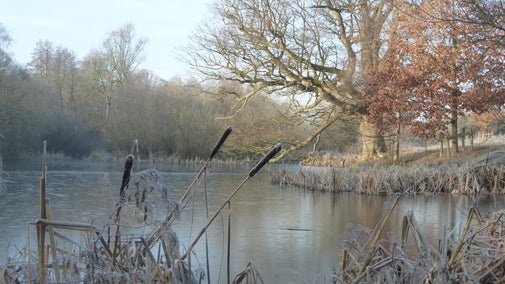
Sissinghurst Castle Garden's collections
Explore the objects and works of art we care for at Sissinghurst Castle Garden on the National Trust Collections website.

Victoria (Vita) Mary Sackville-West (1892-1962) was a prolific fiction writer, prize-winning poet, and gardener. Her husband, Harold Nicolson, was a diplomat and important diarist. Their younger son Nigel Nicolson also became a writer, as did his son Adam. The Sackville-Wests and Nicolsons were involved in the activities of the National Trust from its earliest days.
Vita was born at Knole, the only daughter of Lionel Edward Sackville-West (later third Baron Sackville) and his cousin, Victoria Sackville-West.
As a young girl, Vita delighted in showing visitors around Knole, and she expressed profound attachment to the estate throughout her life. It was therefore a constant source of distress to her that, as a woman, she was unable to inherit her ancestral home. Knole passed to her cousin Eddy after her father’s death.
Her book, Knole and the Sackvilles, remains an eloquent appraisal of her family and their stately home.
Vita married diplomat Harold Nicolson in 1913. The Nicolsons enjoyed a close relationship and a very successful marriage, later documented in their son Nigel’s book, Portrait of a Marriage (1973).
Both had affairs with same-sex partners throughout their married life, Vita perhaps most famously with the writer and Bloomsbury group member, Virginia Woolf. Vita and Harold’s mutual acceptance of each other’s lovers affirmed their commitment to their marriage.
Vita had begun writing novels, plays and poetry as a girl, but her experiences in Constantinople (now Istanbul) while she and Harold were in residence prompted her to write Poems of East and West in 1917, beginning a long writing career.
Her poem The Land (1926) won the Hawthornden prize in 1927, and memorialised the customs, rituals, and landscapes of her native Kent’s agricultural seasons. The poem preserves some of the cadences of the county’s archaic farming language and was immensely popular, as was its follow-up, The Garden, published in 1946.
Vita’s novels also sold well, especially The Edwardians (1930), and often revolved around country houses, the aristocracy, and inheritance.
Vita and Harold purchased Sissinghurst Castle in 1930, a then run-down Elizabethan mansion in Kent, and began immediately to renovate both house and garden.
Vita became increasingly reclusive as the Second World War began, and spent her last decades ensconced at Sissinghurst, writing novels and gardening books in its famous tower and creating the splendour of its gardens.
Vita began speaking for the National Trust in 1928, helped to negotiate the institution’s taking over of Knole in the early 1940s, and became, along with Harold (who served as Executive Council vice-chairman), a member of the Trust’s council. Sissinghurst became a Trust property upon her death in 1962.
This article was written by Allison Adler Inglis-Taylor from the University of Oxford. Allison specialises in English literature, history, and culture from 1800 to the present day, and also has research interests in political history and theatre. She enjoys forging connections between her research in heritage studies and the history of the countryside with institutions that conserve historical sites and landscapes.

Explore the objects and works of art we care for at Sissinghurst Castle Garden on the National Trust Collections website.
From castle to prison, working farm to world-renowned garden, Sissinghurst's past is nothing but varied and each of its incarnations have added to its story.

Explore the garden at Sissinghurst this season and discover why it ranks among the most famous gardens in England.

Climb the Tower at Sissinghurst for views of the whole garden and peruse thousands of books in the Library.

Find out more about the final phase in developing the Delos garden at Sissinghurst Castle, reimagined from Vita and Harold’s original vision.
With 460 acres of beautiful Wealden countryside there’s plenty of space to explore, run around, walk the dog, cycle and spot wildlife on the estate at Sissinghurst Castle Garden.
